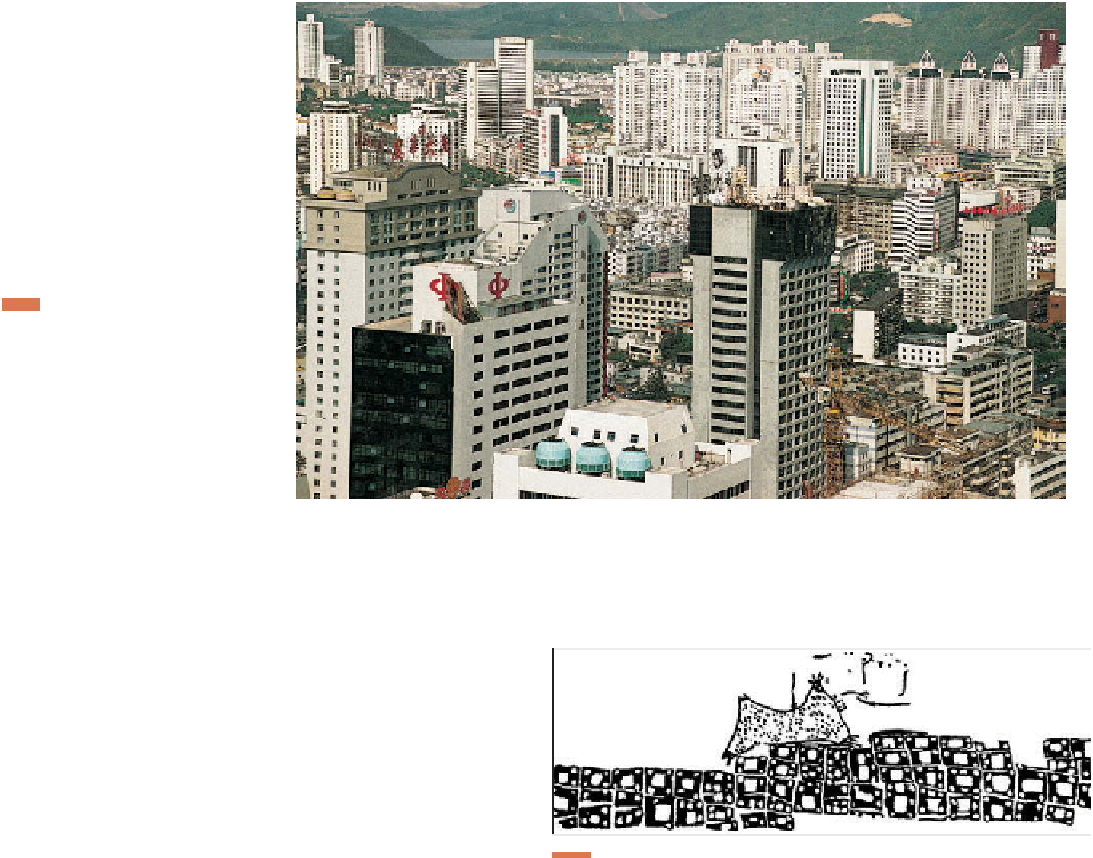Geography Reference
In-Depth Information
Figure 9.4
Shenzhen, China.
Shenzhen
changed from a fi shing village to a
major metropolitan area in just 25
years. Everything you see in this
photograph is less than 25 years
old; all of this stands where duck
ponds and paddies lay less than
three decades ago.
© H. J. de Blij.
Some cities grew out of agricultural villages, and
others grew in places previously unoccupied by sed-
entary people. The innovation of the city is called the
fi rst
urban revolution
, and it occurred independently
in six separate hearths, a case of independent inven-
tion
1
(Fig. 9.6). In each of the urban hearths, people
became engaged in economic activities beyond agricul-
ture, including specialty crafts, the military, trade, and
government.
The six urban hearths are tied closely to the hearths
of agriculture. The fi rst hearth of agriculture, the Fertile
Crescent, is the fi rst place archaeologists fi nd evidence
of cities, dating to about 3500
Figure 9.5
Catal Huyuk.
Dated to 12,000 years ago, the early city of
Catal Huyuk was in a western extension of the Fertile Crescent,
in present-day Turkey. This image is a reproduction of cave art
found in Catal Huyuk. Archaeologists interpreted the cone struc-
ture in the background as a volcano, and the square sin the front
as houses. Adapted from James Mellaart,
Catal Huyuk: A Neolithic
Town in Anatolia,
1967, McGraw-Hill.
. This urban hearth is
called
Mesopotamia
, referring to the region of great cit-
ies (such as Ur and Babylon) located between the Tigris
and Euphrates rivers. Studies of the cultural landscape
and urban morphology of Mesopotamian cities have
found signs of social inequality in the varying sizes and
ornamentation of houses. Urban elite erected palaces,
protected themselves with walls, and employed countless
artisans to beautify their spaces. They also established a
priest-king class and developed a religious-political ide-
ology to support the priest-kings. Rulers in the cities
were both priests and kings, and they levied taxes and
demanded tribute from the harvest brought by the agri-
cultural laborers.
bce
Archaeologists, often teaming up with anthro-
pologists and geographers, have learned much about the
ways ancient Mesopotamian cities functioned by study-
ing the urban morphology of the cities. The ancient
Mesopotamian city was usually protected by a mud wall
surrounding the entire community, or sometimes a cluster
of temples and shrines at its center. Temples dominated
the urban landscape, not only because they were the larg-
est structures in town but also because they were built on
artifi cial mounds often over 100 feet (30 meters) high.
In Mesopotamia, priests and other authorities
resided in substantial buildings, many of which might
1
Some scholars argue that there are fewer than fi ve hearths and attribute
more urbanization to diffusion.











































